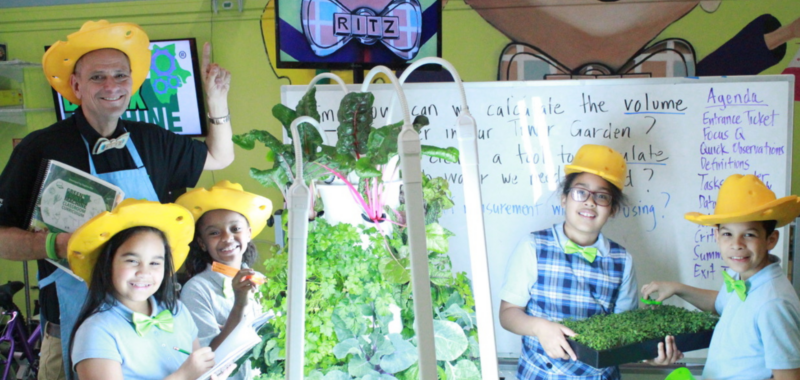If you want to start a tower garden in your classroom or school, there’s one main thing you need. And it has nothing to do with seeds, plants, or any other supplies and equipment. What you need is data.
As teachers and schools are asked to do a lot more with a lot less, it’s essential that anything you add to the school day supports overall education goals. As a teacher from the South Bronx, Stephen Ritz knows this all too well.
“Schools are continually asking teachers to do so much, year after year, and the list keeps growing,” Ritz says. “If you want to add a garden to your classroom, it must support math, science, reading, and writing. It should also drive attendance and test scores, while making children healthier. And you know what? It absolutely can!”
Ritz, whom We Are Teachers featured in a school garden article a few years ago, is now the founder of the nonprofit Green Bronx Machine. He helps teachers all over the country get tower gardens and important curriculum in their classrooms, often for free—thanks to their grant portal with resources on how to make it happen. The gardens are easy to set up, they allow you to grow year-round, and require no gardening experience to get started.
We asked Ritz for his best advice and data to help make the case for others to get classroom and school gardens, and he definitely came through. Here’s our top data to share—we hope it helps you get the tower garden of your dreams!
A tower garden can improve science scores.
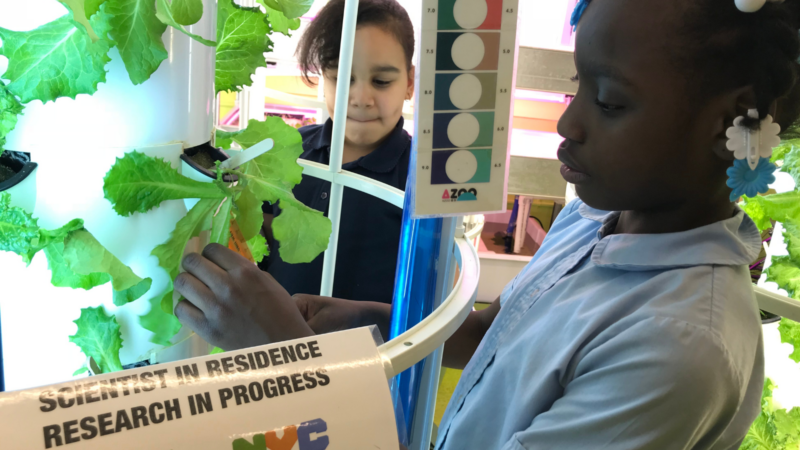
In research summarized by the University of Georgia Extension, they found in 12 different studies that schools with gardening activities saw substantial increases in their science scores. You can read more about the study here, which aligns with results Ritz has seen as well.
“With a tower garden in your classroom, science is automatic,” he says. “It’s a living thing that’s evolving and growing. Daily observations, measurements, predictions, and routine maintenance foster a science mindset—nurture it! When children are embedded and invested in their work, they care about the outcome and all lessons stick better.”
A tower garden can also improve math skills.
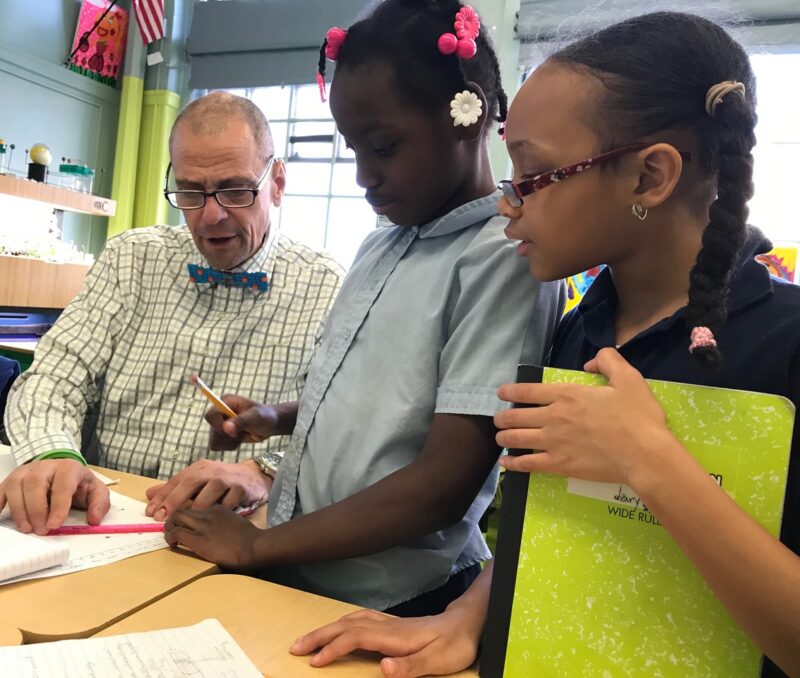
Green Bronx Machine works with more than 10,000 teachers and 275,000 students, and they go to great lengths to analyze the impact gardening has on academic performance. One of their findings was improvements in math. According to their surveys from schools using their curriculum, they saw improvements like:
- 78% of students could differentiate between pie charts, bar graphs, and line graphs, compared to 18% prior.
- 82% of students could identify the correct unit of liquid measurement, compared to just 28% before.
A tower garden can boost a student’s understanding of health and nutrition.
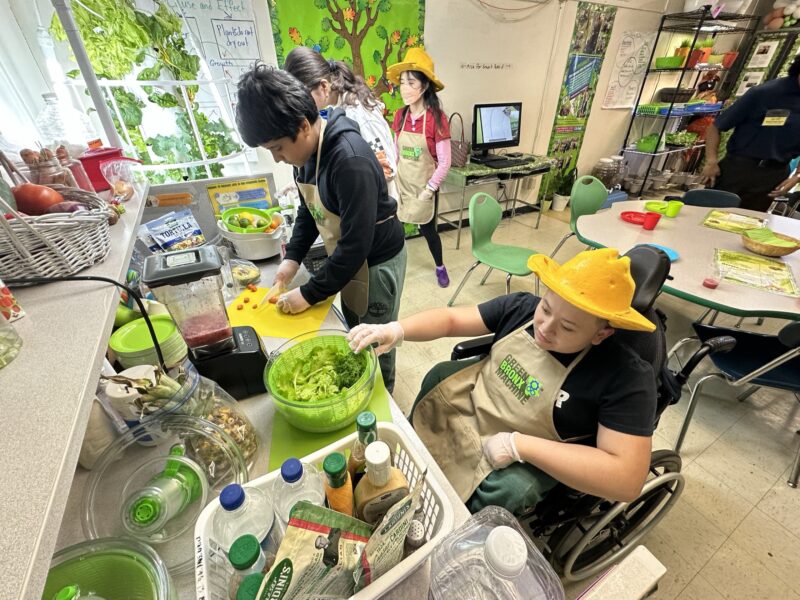
Research from Green Bronx Machine indicates that classroom tower gardens impact how students think about and understand food. Before students were exposed to their garden program, only 12% understood the relationship between fresh fruits and veggies to diseases like diabetes and heart disease. Afterwards, this number jumped up to more than 90%. In addition, only 9% of students said they knew how to create a nutritious meal. This number increased to 93% after the Green Bronx Machine’s curriculum.
According to the USDA, children who have access to a salad bar at school will eat 43% more veggies during their lifetime. Done right, food-education and gardening tie into multiple academic and health opportunities. This report from the New York City Department of Education—Prioritizing Food Education in Our Public Schools—makes a strong case for this as well.
A tower garden can improve relationships with both students and families.
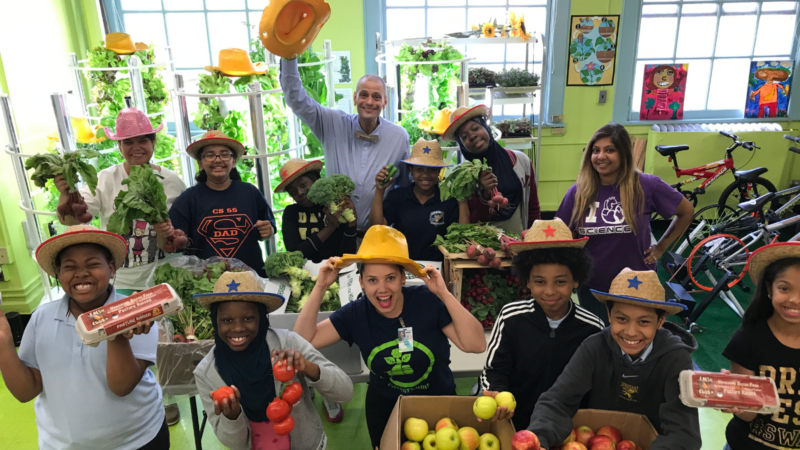
The Green Bronx Machine has amazing stories and strong evidence about how gardening brought their school and neighborhood communities together, including a tower garden farm at Yankee Stadium. They report 77% of participating teachers say a garden positively impacted their students’ families. More than 90% report students remained highly engaged with tower gardens supported by Green Bronx programming.
“Students are genuinely curious to see the outcomes, even if they don’t want to eat vegetables,” Ritz says. “They want to see what will happen and want to know, ‘Does it really work?’ And that’s when teachers do their best magic—engage, teach, and inspire.”
A tower garden can positively influence how a student feels about going to school.
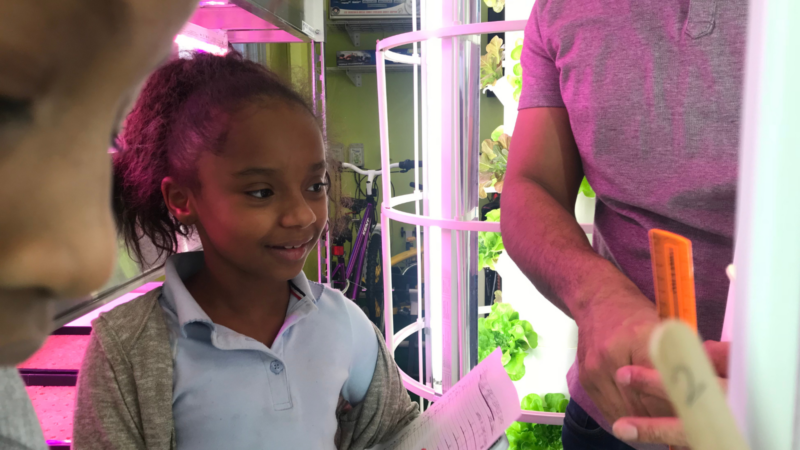
According to research highlighted by Children & Nature Network, school gardens have been shown to improve students’ attitudes toward school. When students are engaged in the garden and have a stake in the results, it can reduce absenteeism and improve overall attendance rates.
A tower garden can increase a student’s independence and social skills.
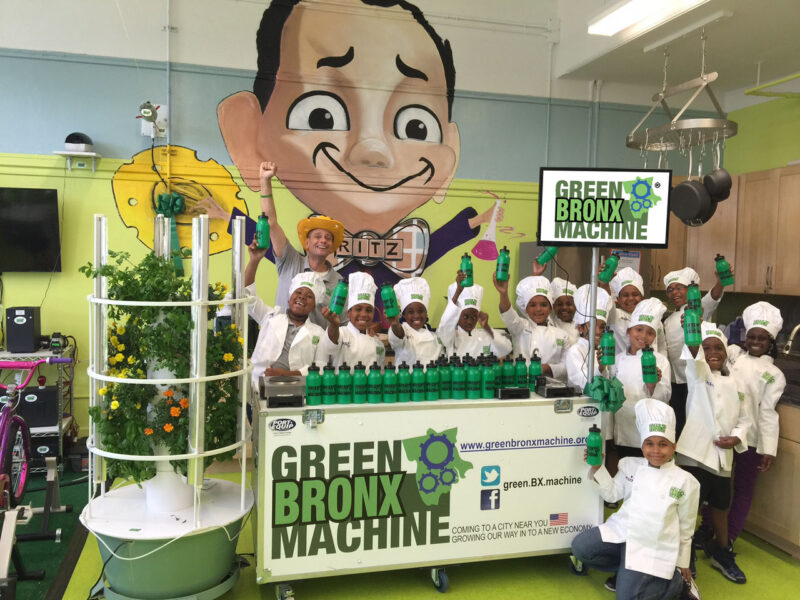
When students are directly involved in hands-on activities, it naturally builds their independence. Research provided by the University of Georgia Extension, shows how gardening builds student relationships with one another. For instance, they found students are more likely to talk to one another and collaborate because of the shared responsibilities and interests.
“When children grow food, they eat it! In communities like mine, this program is the secret-sauce for higher performing schools and happier, healthier children,” Ritz says. “This is learning that children can taste and touch, share or sell. It involves lots of decisions to be made, which helps build agency, community, consensus, and expertise.”
For those who have gardened with young people, these stats might not be surprising because you’ve seen it work. You know the magic of gardening, the power of plants, and what happens with hands-on learning. And now you have the data to back it up.
“Use our resources to make your case to start growing with your students, families, and community,” Ritz says. “Our documentary, GENERATION GROWTH, educational series, and curriculum demonstrate the success of tower gardens in schools across the country. The data speaks for itself, and we’re here to help you every step of the way.”

